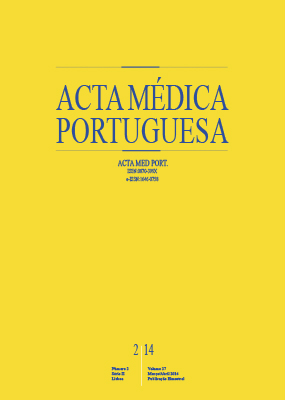Medicine on the Work of Amadeo de Souza-Cardoso
DOI:
https://doi.org/10.20344/amp.5376Abstract
Amadeo de Souza-Cardoso, one of the pivotal figures of the Portuguese Modernist movement, studied painting and began his work in Paris where he arrived at the age of 19. Interestingly, Amadeo cemented strong friendships with some physicians from his time. The first was Manuel Laranjeiro, physician, poet and essayist, who has been a major influence on his choice of studying visual arts. In 1909, the painter met the dermatologist Paul Alexander and later Dr. Martins, who diagnosed him with a dermatosis, which led the painter to have to interrupt his work. Described as an eczema, which affected his face and hands, probably an allergic contact dermatitis to paints or other products that did not become clarified, with the artist’s early death at age of 30 by pneumonic fever. Occupational diseases affect the practice of many professions and artists, including painters, who constitute an important risk group. Contact with several components of paints and solvents are associated with the contact sensitization. However, allergens responsible for allergic contact dermatitis change over the time according to the usage trends and products´ composition.Downloads
Downloads
Published
How to Cite
Issue
Section
License
All the articles published in the AMP are open access and comply with the requirements of funding agencies or academic institutions. The AMP is governed by the terms of the Creative Commons ‘Attribution – Non-Commercial Use - (CC-BY-NC)’ license, regarding the use by third parties.
It is the author’s responsibility to obtain approval for the reproduction of figures, tables, etc. from other publications.
Upon acceptance of an article for publication, the authors will be asked to complete the ICMJE “Copyright Liability and Copyright Sharing Statement “(http://www.actamedicaportuguesa.com/info/AMP-NormasPublicacao.pdf) and the “Declaration of Potential Conflicts of Interest” (http:// www.icmje.org/conflicts-of-interest). An e-mail will be sent to the corresponding author to acknowledge receipt of the manuscript.
After publication, the authors are authorised to make their articles available in repositories of their institutions of origin, as long as they always mention where they were published and according to the Creative Commons license.









